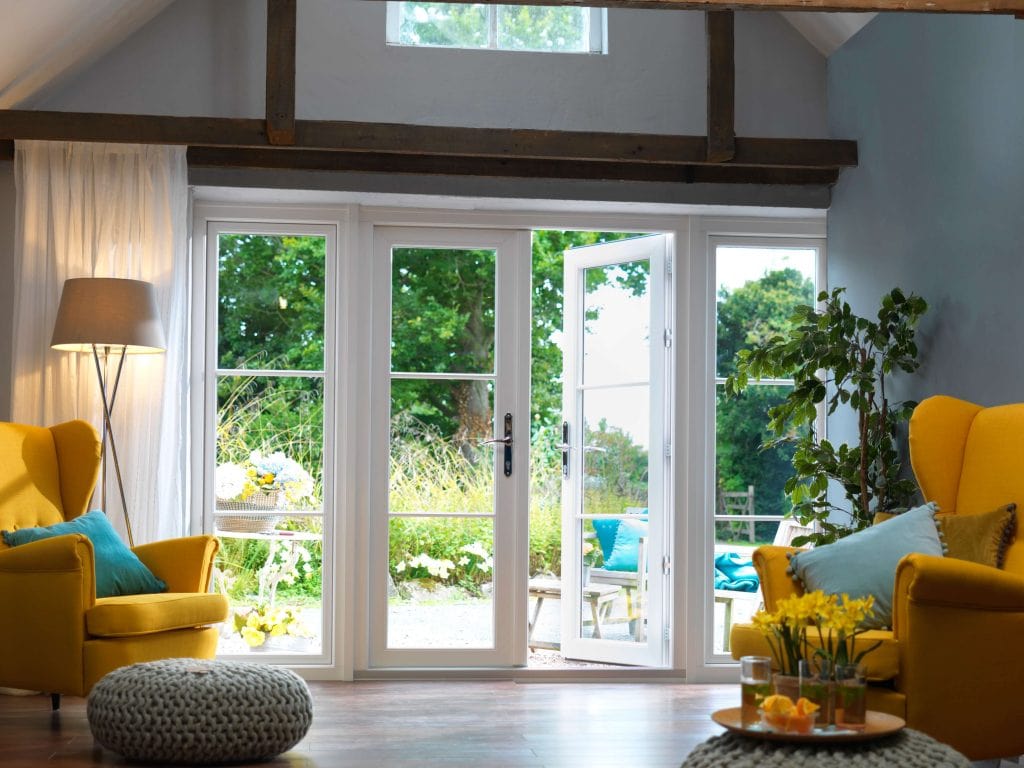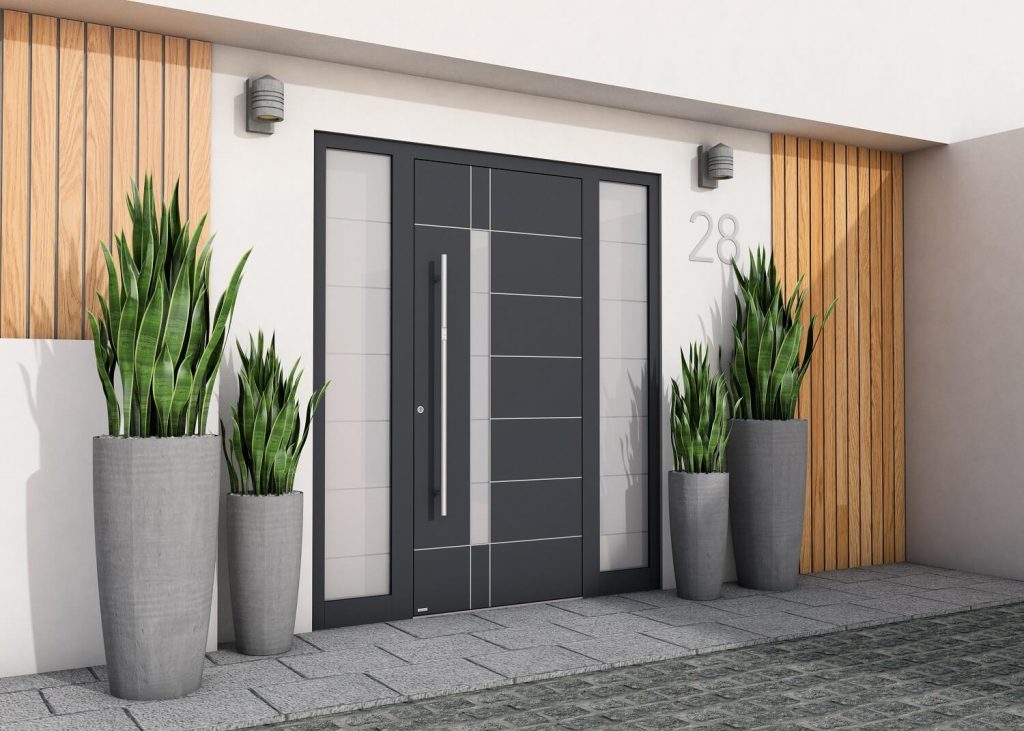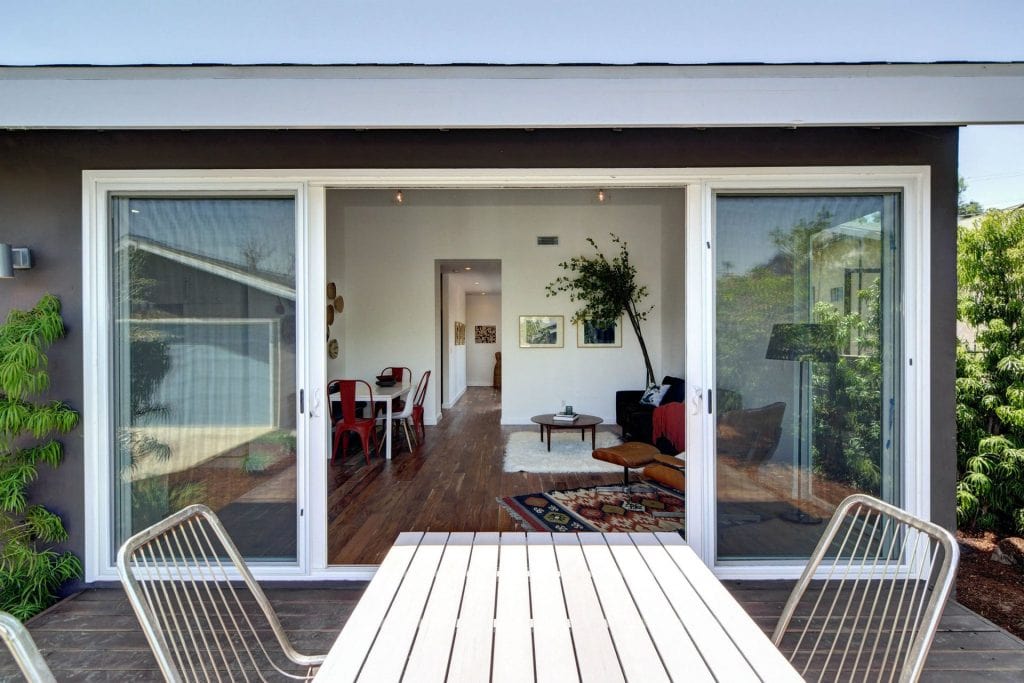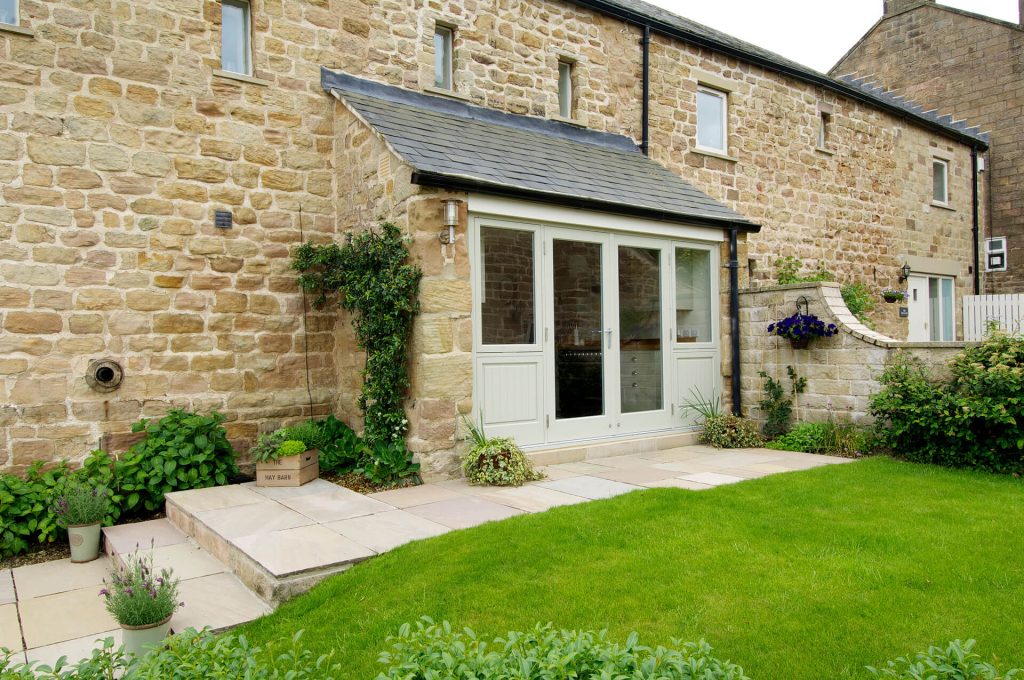Door FAQs
We’ve compiled a list of the most frequently asked questions we receive when it comes to replacing doors, whether you’re replacing your front or back doors.
How do I know when it is time to replace my door?
Here are 3 tell-tale signs that it might be time to replace your doors. These problems can affect both the front and back doors of your home.
• Hot and/or cold air should not enter through any closed doors in your home. If you are feeling drafts, it may be time to replace your doors.
• If you can see moisture building up in-between your double glazing panels it may mean that the seal between those two panes has worn away and is failing to keep moisture out of your home. Over time, this can cause mildew and mould to build between the panes of glass.
• If your door is difficult to open and close, it’s probably time to consider replacing it. Not only is a door that is sticking really annoying, but it can also pose a security threat. Doors that aren’t operating properly are not as secure and are often easier to break in through.

What material should I choose for my door?
Front door material options
Composite: Composite doors are now the most popular entrance door choice for UK homeowners. Their excellent levels of security and energy efficiency alongside their sleek aesthetic has proven a hit with households across the UK. Available in a wide range of colours, composite doors will complement any style of home.
uPVC: uPVC entrance doors provide homeowners with an affordable entrance door option, that’s as equally energy efficient & secure as it is economic & aesthetically pleasing.
Aluminium: Known for being incredibly robust and durable, yet lightweight and elegant, aluminium doors provide excellent protection for the home from the weather and potential intruders alike.
Timber: Naturally, wood looks great and insulates superbly, which means timber doors are ideal for anyone looking to create a better looking, more efficient home.
Back door material options;
Aluminium: Aluminium’s practical qualities and industrial beauty deliver a multitude of benefits to savvy homeowners throughout Yorkshire and beyond. Give your home a classy touch without sacrificing warmth or security with one of our luxurious aluminium door options. Whether you choose bifold or sliding doors, aluminium is a contemporary and advantageous material choice.
uPVC back doors; uPVC back doors offer homeowners the ideal way to open up their living spaces & welcome the outside in whilst remaining economical yet stylish.
Timber: Naturally, wood looks great and insulates superbly, which means timber doors are ideal for the back door entrances of your home.
Do I need to get planning permission before replacing my doors?
You do not usually need to apply for planning permission if you’re replacing your old doors with new ones. If you live in a conservation area and you are unsure whether you are allowed to replace your doors, it may be worth seeking advice from your local council.

How secure are your doors?
No matter what material you choose for your doors, or whether you’re replacing front or back doors, We promise the utmost security and peace of mind.
You can expect advanced security hardware like multi-point locks and internal beading as standard, as well as a number of optional security upgrades.
What type of doors do I currently have?
If you’re thinking about replacing the doors in your home, one of the first things you’ll need to do is to identify what kind of doors are already in your house.
Material: Identify the type of material used in your doors. It’s likely your doors will be either uPVC, timber, composite or aluminium. It’s usually quite easy to identify the material used, simply by examining the interior and exterior of the door and feeling the door itself. If you are really unsure of the material you have, you could ask one of our experts when you enquire with us, and we will do our best to help.
Opening: Identifying how your doors open is another important point to recognise. This is often more important when replacing back doors, as there are multiple opening variations. Front doors commonly open outwards on side hung hinges.
French doors: Usually installed in pairs, these are traditionally hinged double doors that open onto your garden or patio. French doors contain a central frame with multiple transparent panels.
Bifold doors: Bifold doors open in a concertina fashion. They’re made up of multiple panes or ‘leaves’ that fold back on themselves in order to open up an entire aperture.
Patio doors: Sliding patio doors tend to be designed using two or more large panels of glass, which smoothly slide to the end of the door frame.

What do door energy ratings mean?
Door energy efficiency rating schemes are based on a scale that ranges from A-G. This system is similar to the labelling system used that you may have seen on fridges, washing machines, and cookers. An A rating indicates a good level of energy efficiency, whilst G is the lowest rating. Low-rated doors will not normally satisfy building regulations requirements. We’re confident that all of our doors, front and rear, meet or surpass the recommended energy efficiency level.
What colour options are available for my new doors?
The colour options available to you will depend on the style of door you choose. We have a wide range of colours available for all of our door styles, from modern or traditional, to understated or bold. There’s a colour for everyone.

Here to help
If you require any further information, or you have a question we haven’t answered here, don’t hesitate to contact our team of skilled professionals where you can also get a free, no-obligation quote. We look forward to helping with your door replacement project.

















